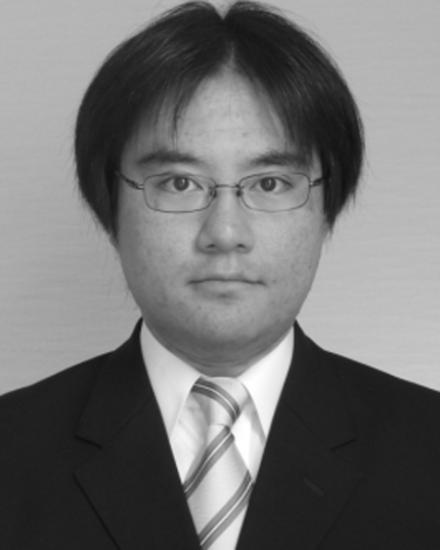Abstract:
We have developed a pupil-corneal reflection method-based gaze detection system, which allows large head movements and achieves easy gaze calibration. This system contain...Show MoreMetadata
Abstract:
We have developed a pupil-corneal reflection method-based gaze detection system, which allows large head movements and achieves easy gaze calibration. This system contains two optical systems consisting of components such as a camera and a near-infrared light source attached to the camera. The light source has two concentric LED rings with different wavelengths. The inner and outer rings generate bright and dark pupil images, respectively. The pupils are detected from a difference image created by subtracting the bright and dark pupil images. The light source also generates the corneal reflection. The 3-D coordinates of the pupils are determined by the stereo matching method using two optical systems. The vector from the corneal reflection center to the pupil center in the camera image is determined as r. The angle between the line of sight and the line passing through the pupil center and the camera (light source) is denoted as θ. The relationship θ = k | \bm r | is assumed, where k is a constant. The theory implies that head movement of the user is allowed and facilitates the gaze calibration procedure. In the automatic calibration method, k is automatically determined while the user looks around on the PC screen without fixating on any specific calibration target. In the one-point calibration method, the user is asked to fixate on one calibration target at the PC screen in order to correct the difference between the optical and visual axes. In the two-point calibration method, in order to correct the nonlinear relationship between θ and | r |, the user is asked to fixate on two targets. The experimental results show that the three proposed calibration methods improve the precision of gaze detection step by step. In addition, the average gaze error in the visual angle is less than 1° for the seven head positions of the user.
Published in: IEEE Transactions on Biomedical Engineering ( Volume: 60, Issue: 10, October 2013)

Graduate School of Engineering, Shizuoka University, Hamamatsu, Japan
Yoshinobu Ebisawa (M’93) was born in Hiratsuka, Japan, in February 1961. He received the B.Sc., M.Sc., and Ph.D. degrees in electrical engineering from Keio University, Yokohama, Japan, in 1984, 1986 and 1989, respectively.
He is currently a Professor with the Department of Mechanical Engineering, Graduate School of Engineering, Shizuoka University, Hamamatsu, Japan. from 1992 to 2004, he was an Associate Professor with th...Show More
Yoshinobu Ebisawa (M’93) was born in Hiratsuka, Japan, in February 1961. He received the B.Sc., M.Sc., and Ph.D. degrees in electrical engineering from Keio University, Yokohama, Japan, in 1984, 1986 and 1989, respectively.
He is currently a Professor with the Department of Mechanical Engineering, Graduate School of Engineering, Shizuoka University, Hamamatsu, Japan. from 1992 to 2004, he was an Associate Professor with th...View more

Graduate School of Engineering, Shizuoka University, Hamamatsu, Japan
Kiyotaka Fukumoto received the Ph.D. degree in engineering from Kyushu University, Fukuoka-shi, Japan, in 2010.
From April to November 2010, he was a Postdoctoral Researcher at Kyushu University. from December 2011 to 2012, he was an Assistant Professor at the Faculty of Engineering, Shizuoka University, where he is currently an Assistant Professor at the Graduate School of Engineering, Shizuoka University. His research in...Show More
Kiyotaka Fukumoto received the Ph.D. degree in engineering from Kyushu University, Fukuoka-shi, Japan, in 2010.
From April to November 2010, he was a Postdoctoral Researcher at Kyushu University. from December 2011 to 2012, he was an Assistant Professor at the Faculty of Engineering, Shizuoka University, where he is currently an Assistant Professor at the Graduate School of Engineering, Shizuoka University. His research in...View more

Graduate School of Engineering, Shizuoka University, Hamamatsu, Japan
Yoshinobu Ebisawa (M’93) was born in Hiratsuka, Japan, in February 1961. He received the B.Sc., M.Sc., and Ph.D. degrees in electrical engineering from Keio University, Yokohama, Japan, in 1984, 1986 and 1989, respectively.
He is currently a Professor with the Department of Mechanical Engineering, Graduate School of Engineering, Shizuoka University, Hamamatsu, Japan. from 1992 to 2004, he was an Associate Professor with the Department of Optoelectric and Mechanical Engineering and then the Department of Systems Engineering, Faculty of Engineering, Shizuoka University. His current major research interests include development of pupil detection technique and its applications for human-computer interaction, and human visuo-oculomotor system.
Yoshinobu Ebisawa (M’93) was born in Hiratsuka, Japan, in February 1961. He received the B.Sc., M.Sc., and Ph.D. degrees in electrical engineering from Keio University, Yokohama, Japan, in 1984, 1986 and 1989, respectively.
He is currently a Professor with the Department of Mechanical Engineering, Graduate School of Engineering, Shizuoka University, Hamamatsu, Japan. from 1992 to 2004, he was an Associate Professor with the Department of Optoelectric and Mechanical Engineering and then the Department of Systems Engineering, Faculty of Engineering, Shizuoka University. His current major research interests include development of pupil detection technique and its applications for human-computer interaction, and human visuo-oculomotor system.View more

Graduate School of Engineering, Shizuoka University, Hamamatsu, Japan
Kiyotaka Fukumoto received the Ph.D. degree in engineering from Kyushu University, Fukuoka-shi, Japan, in 2010.
From April to November 2010, he was a Postdoctoral Researcher at Kyushu University. from December 2011 to 2012, he was an Assistant Professor at the Faculty of Engineering, Shizuoka University, where he is currently an Assistant Professor at the Graduate School of Engineering, Shizuoka University. His research interests include ergonomics and ultrasound imaging.
Kiyotaka Fukumoto received the Ph.D. degree in engineering from Kyushu University, Fukuoka-shi, Japan, in 2010.
From April to November 2010, he was a Postdoctoral Researcher at Kyushu University. from December 2011 to 2012, he was an Assistant Professor at the Faculty of Engineering, Shizuoka University, where he is currently an Assistant Professor at the Graduate School of Engineering, Shizuoka University. His research interests include ergonomics and ultrasound imaging.View more


